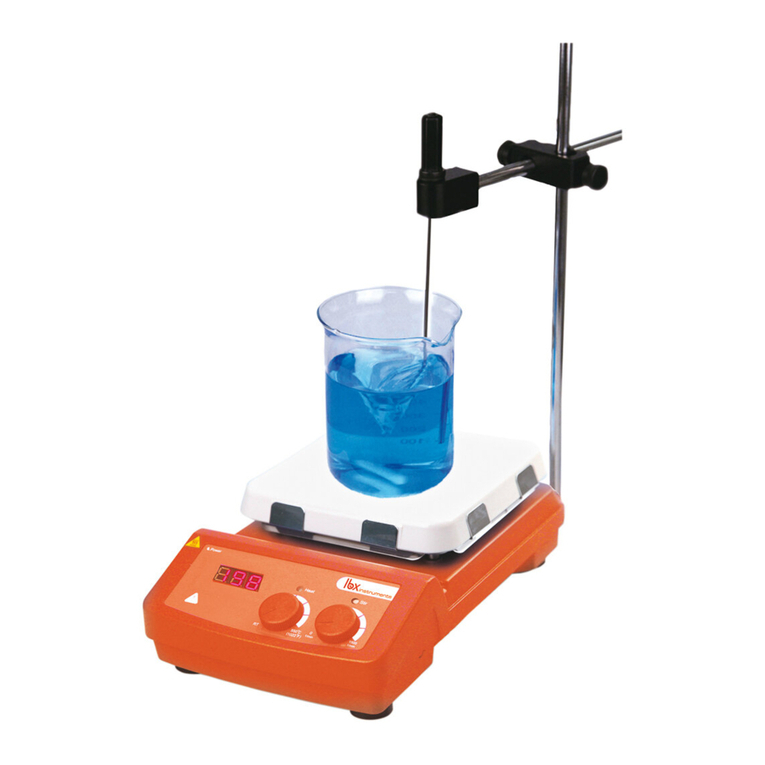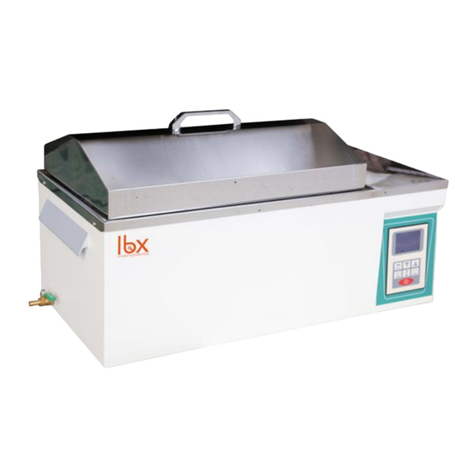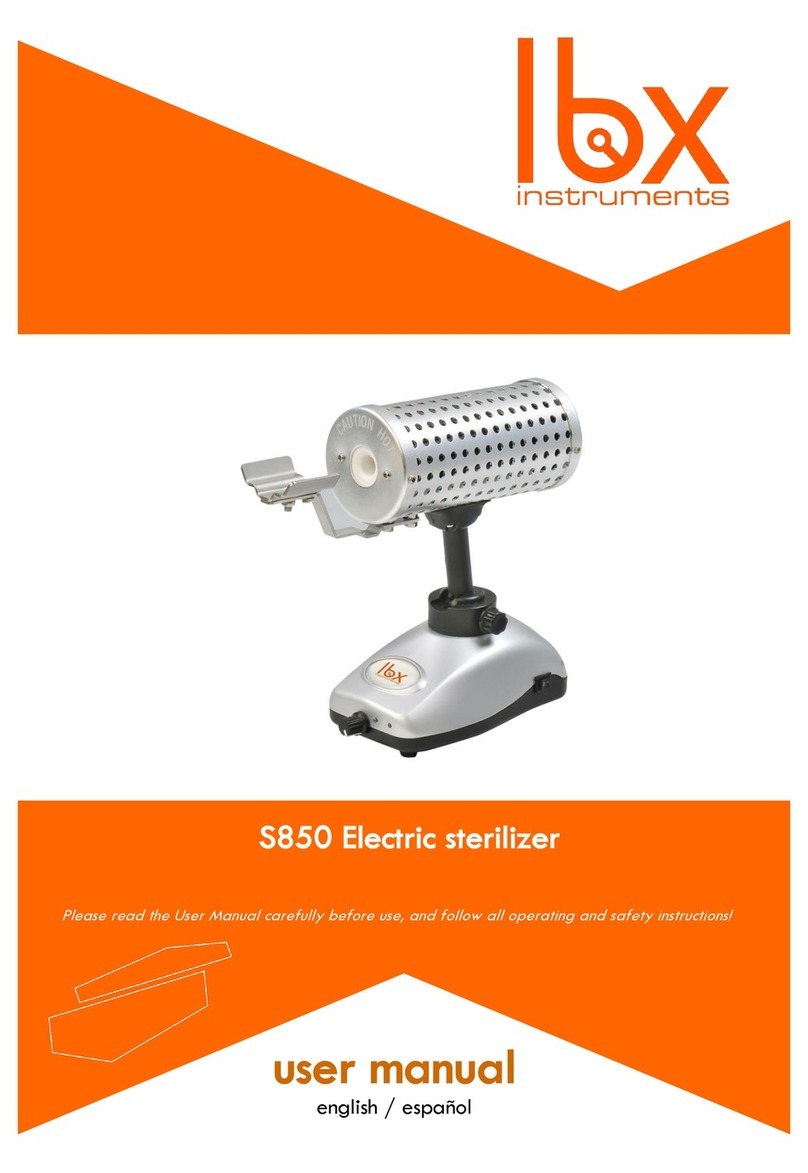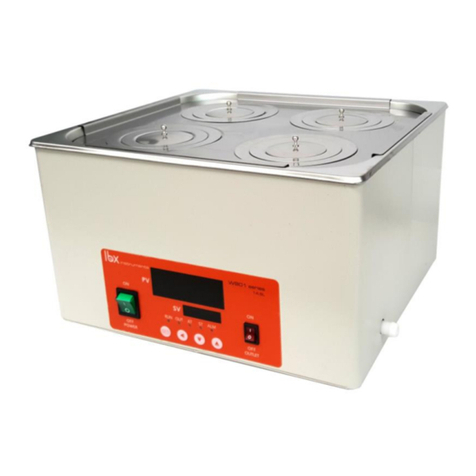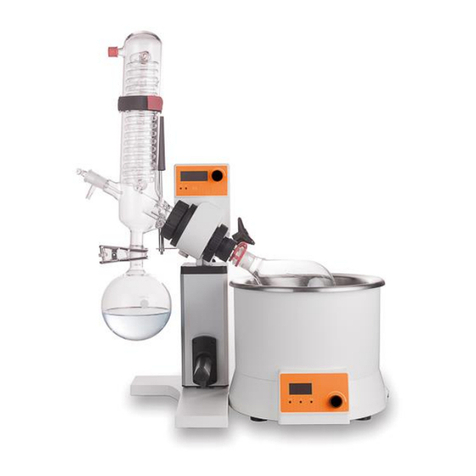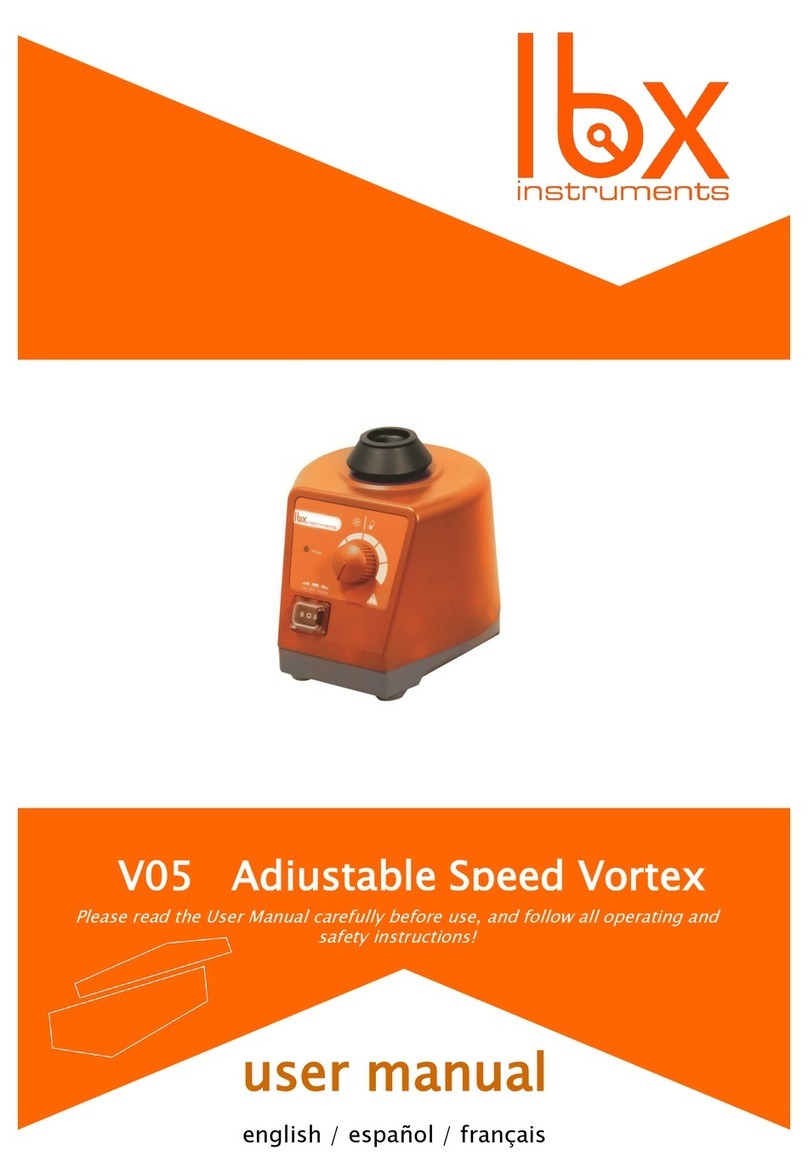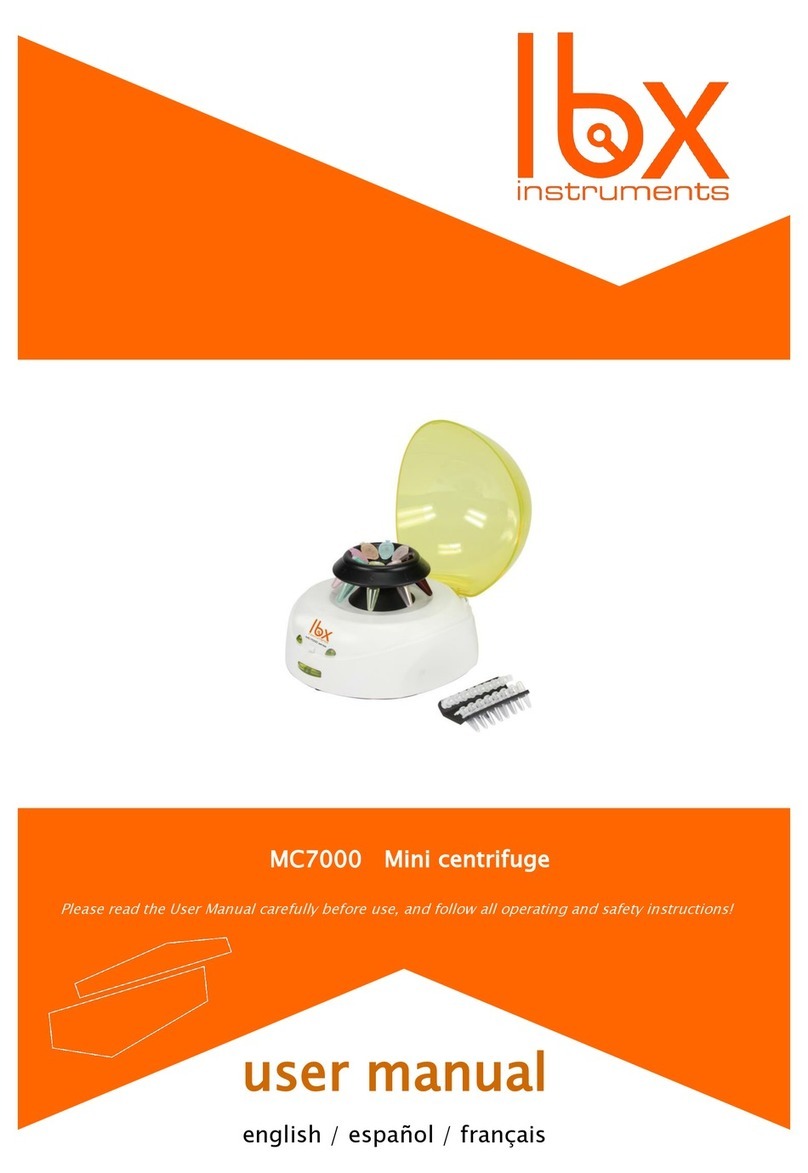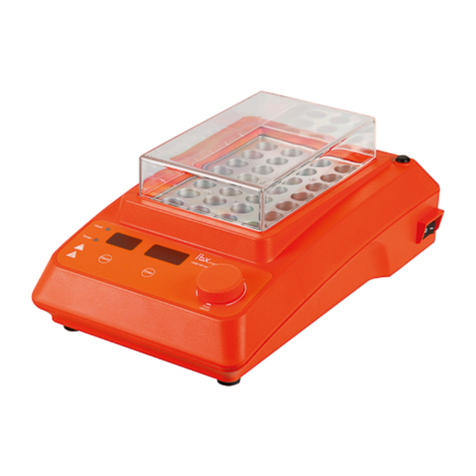
5. Trial Run
• Make sure the required operating voltage and the power supply voltage match.
• Ensure that the socket is properly grounded.
• Plug in the power cable to the system, then to the outlet. Make sure the power is on and begin the
initiation.
• Add the medium into the vessel with a magnetic stirring bar; make sure the magnetic stirring bar
has an appropriate size.
• Place the vessel on the work plate.
• Set the target stirring speed and start stirring.
• Observe the stirring bar (all series).
• Set the target temperature and start heating.
• Observe the LCD display (H20D series).
• Stop the heating and stirring functions.
If the operations above cause no abnormalities, the device is ready to operate. Otherwise, the device
may have been damaged during transportation, please contact the manufacturer/supplier for
technical support.
Warning!
Transfer of the vessel when the
instrument is working is
forbidden.
6. Function: Heating (H20D series)
6.1 H20D series
The device is controlled by a digital temperature control technology, which has two separate safe
circuits. The hotplate is kept at a constant temperature by a digital control circuit. The hotplate
temperature can also be monitored from a separate, adjustable safe circuit. The two internal
temperature sensors (PT1000) for temperature control are built into the hotplate. The single
external PT1000 can monitor the temperature of the sample.
•If using an external sensor PT1000: Always connect to the device BEFORE turning the power on
and insert it into the sample BEFORE heating (see section 6.1.1).
•Turn the equipment on by pressing the ON/OFF switch.
•Set the temperature by rotating the temperature control knob slowly towards the target value.
•While the heating function is on, the LED “Heat” lights up and the LCD screen displays the real
temperature.
•The temperature is displayed on the right side of the LCD screen as well as the “Temp” and “°C”
characters.
•The heating function is switched on or off by pushing the heating knob.






